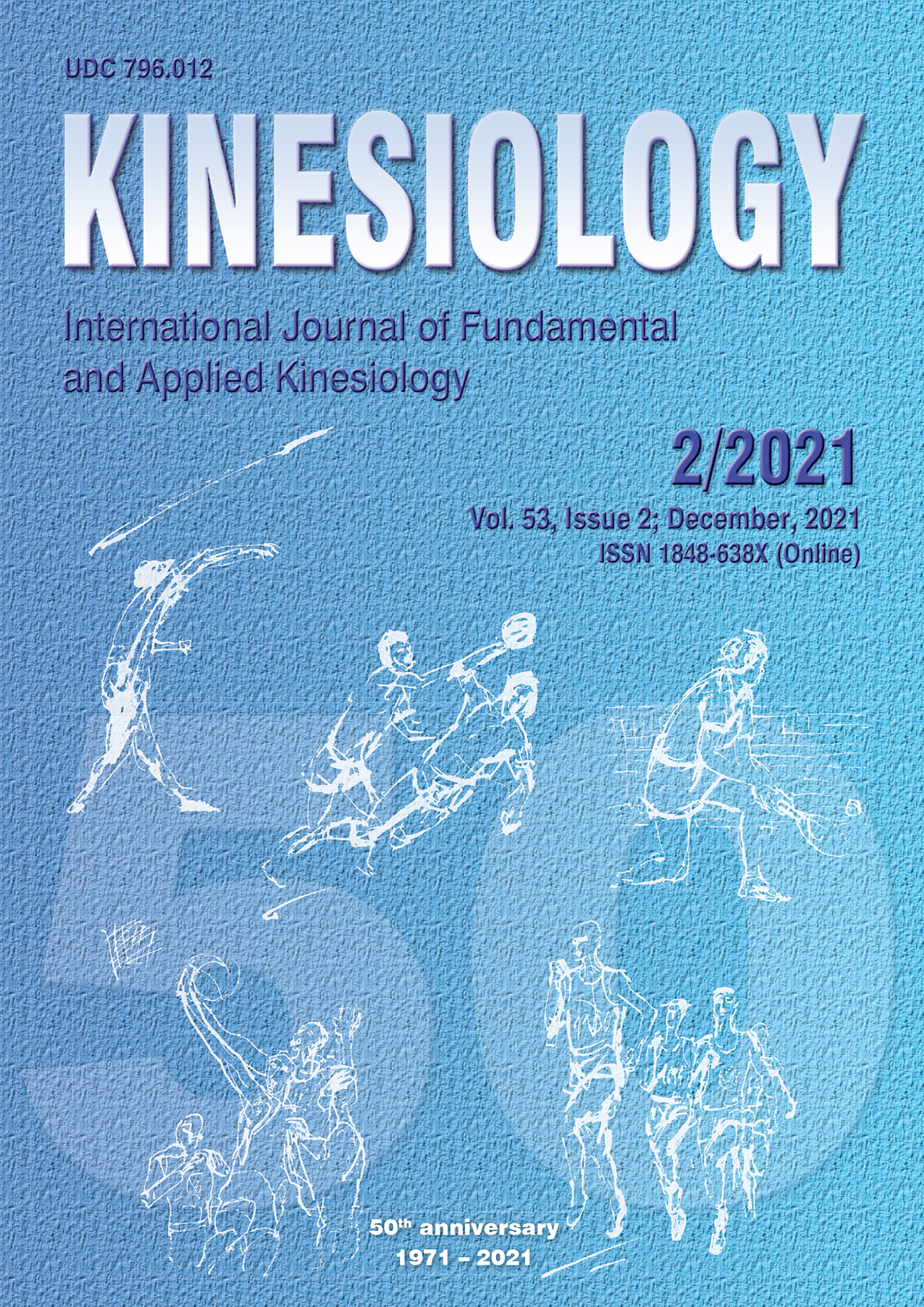THE INFLUENCE OF RUNNING WIDE ON THE BEND ON FINISHING TIMES AND POSITIONS IN MEN’S AND WOMEN’S 800 M FINALS AT MAJOR GLOBAL CHAMPIONSHIPS
Abstract
The aim of this study was to determine the influence of running wide on bends regarding intermediate changes of position, dispersion of athletes, and speed relative to season best (SB) between medalists and non-medalists in men’s and women’s 800 m championship finals. Extra distance covered on bends was measured using official videos. The total distance run was calculated and described as the minimum calculable distance. Theoretical mean speeds, theoretical finishing times and theoretical finishing positions were calculated. In addition, intermediate and total changes of position (on bends and straights) and dispersion between athletes in each 100-m segment were calculated. Finishing times and segment times were calculated relative to SB. Theoretical finishing times were faster than official finishing times (p<.001). Finishing positions were influenced by extra distance covered. Medalists displayed a higher number of positive changes of intermediate positions than non-medalists (p<.001), occurring mainly on the straights (p=.003) and were greatest between 500 and 600 m (p=.003), without differences between groups in total extra distance and in extra distance covered on each bend. Medalists displayed higher total speeds relative to SB (p=.042) and over the 500-600 m segment onwards (p<.05), increasing the dispersion from this segment onwards (p<.001). These findings indicate that running the shortest distance on the bends and being able to accelerate during the last 300 m of the race positively influence finishing position in major championships 800 m finals.
Key words: athletics, pacing, middle-distance running, performance
Downloads
Published
How to Cite
Issue
Section
License

This work is licensed under a Creative Commons Attribution-NonCommercial 4.0 International License.
At Faculty of Kinesiology we recognize that access to quality research is vital to the scientific community and beyond. Kinesiology is non-profit journal and all costs of publishing and peer review process are covered by the publisher itself or other funding sources like Ministry of Science and Education of the Republic of Croatia. Full text papers are also available free of charge at http://hrcak.srce.hr/kineziologija. There are no restrictions on self archiving of any form of paper (preprint, postprint and publisher's version).
Articles are distributed under the terms of the CC BY - NC 4.0
Kinesiology does not charge any fees to authors to submit or publish articles in our journal.


